What's New
Displaying results 3581 - 3590 of 4911
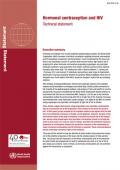
Resource | Publications,
Following new findings from recently published epidemiological studies, the World Health Organization (WHO) convened a technical consultation regarding hormonal contraception and HIV acquisition, progression and transmission. It was recognized that this issue was likely to be of particular concern in countries where women have a high lifetime risk of acquiring HIV, where hormonal contraceptives (especially progestogen-only injectable methods) constitute a large proportion of all modern methods used and where maternal mortality rates remain high.
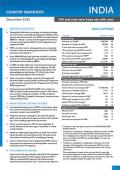
Resource | Reviews and Snapshots,
The MSM Country Snapshots is a new publication series that disseminates strategic information on HIV and men who have sex with men (MSM) in Asia and the Pacific. The four- to five-page documents are intended to circulate good practices, share progress, stimulate discussion, and inform priority interventions and advocacy efforts.
The Snapshots were initiated in recognition of the difficulty of accessing up-to-date country-level information on MSM and HIV. Most importantly, they allow for convenient access to key findings for anyone without paid subscription to academic journals or knowledge of sources for biological and behavioral surveillance data. The documents synthesize key findings at time of publication that span four areas of information: epidemiological, behavioural, programmatic, and legal.

Resource | Publications,
Ten years after the landmark UN General Assembly Special Session on HIV/AIDS (UNGASS), the progress was reviewed at the 2011 UN General Assembly High Level Meeting on AIDS. A new Political Declaration on HIV/AIDS1 with new commitments and bold new targets was adopted. This report covers the progress made by the National AIDS Response (NAR) in Lao PDR in the two years period 2010-2011, against the commitments and targets of the 2011 Political Declaration.

Resource | Publications,
The Ministry of Health and Population (MoHP) had assigned the process of leading the preparation and submission of the Nepal Country AIDS Response Progress Report 2012 to the National Centre for AIDS and STD Control (NCASC) in November 2011. The main objective of the report is to express the highest-level accountability for the political commitment for effectively responding to the HIV epidemic in Nepal. In early January 2012, NCASC/MoHP formed an Advisory Group (AG) and a Technical Working Team (TWT) with defined terms of reference (ToRs).

Resource | Publications,
Based on the latest HIV estimates and projections released by the Philippine National AIDS Council (PNAC), the number of Filipinos living with HIV was estimated at 19,000 in 2011. Of this number, 82 percent are males. The number of new cases per year increased significantly from an estimated 600 cases in 2001 to more than 4,000 in 2011 (with 83 percent males). This trend, as reported in the 2010 Global Report on the AIDS Epidemic, placed the Philippines as one of seven countries that recorded more than 25 percent increase in new cases in the last decade.
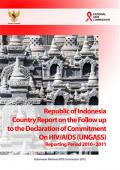
Resource | Publications,
Indonesia, a country with a population of 237.5 million in 2010 has an estimated HIV prevalence of 0.27% among the 15-49 years age group (MoH, Mathematic Model of HIV Epidemic in Indonesia 2008-2014). Indonesia’s HIV and AIDS epidemic is concentrated amongst key affected population resulting from a mix of two modes of transmissions, sexual transmission and drug injecting.
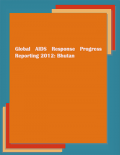
Resource | Publications,
The National STIs and HIV AIDS Prevention and Control Programme (NACP), under the Department of Public Health, led the preparation and submission of this report, with technical support from UNAIDS, Nepal. The report was prepared through desk reviews of current literature and discussions with key persons involved in the epidemic response at both the national and sub-national levels. A consultative meeting with key stakeholders and implementing partners from various sectors was organised for the National Commitments and Policy Instruments (NCPI) review. Their valuable experiences and knowledge contributed immensely to understanding the ground realities and devising future strategies.
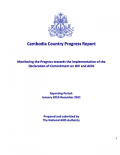
Resource | Publications,
The compilation of this report has involved contribution from a board spectrum of government ministries and secretariats, from different national and sub-national levels, in partnership with NGOs and CSOs, who work as part of the national response to HIV and AIDS in Cambodia.

Resource | Publications,
The preparation of Mongolia’s 2012 country progress report has been led by the National Committee on HIV and AIDS. The development of the report involved the key stakeholders including government institutions, civil society organizations, multilateral and bilateral partners.
Countries were asked to report on 30 indicators of seven main strategies. Six indicators were not applicable to the HIV epidemic and response in Mongolia, meaning that there is no requirement to report these indicators.

Resource | Publications,
The Republic of Korea (ROK) has an area of 99 k m 2 with a population o f 49 million (as of 2011). The number of medical facilities is 81,681 in 2010 and the number of medical manpower is 870 persons per 100,000 populations.
For HIV/AIDS, the first HIV in fected cases detected and reported in 1985 and then the number of reported HIV infection s steadily increased afterward to date. To cope wi th this newly emerging disease burden, the ROK established the advisory committee on HIV/AIDS Prevention Programs and enacted Korea HIV/AIDS Prevention Act in 1987.





